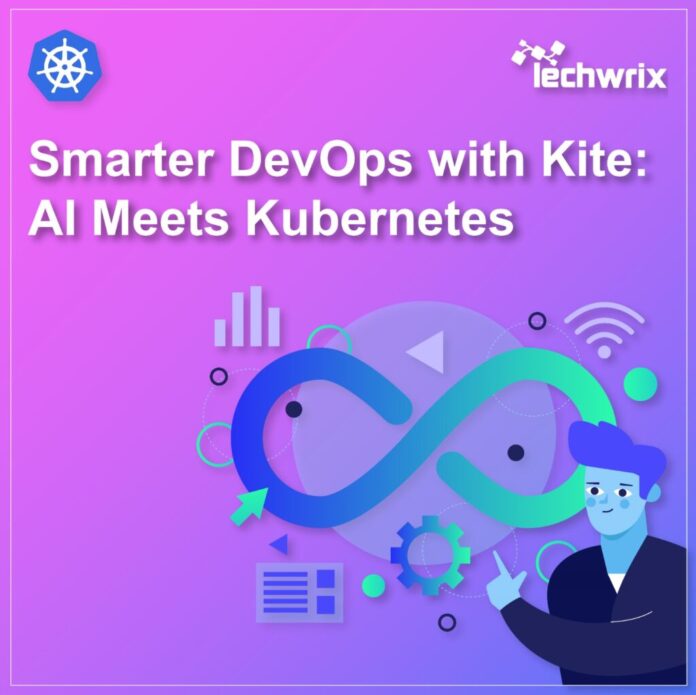The story of DevOps has always been about evolution i.e. from manual system management to full-scale automation. But in 2025, we’re entering a new phase where automation alone isn’t enough. The next wave is intelligentDevOps systems that can analyze, predict, and adapt on their own.
That’s where Kite comes in bringing AI into the heart of Kubernetes operations to make DevOps smarter, faster, and more resilient.
The Evolution of DevOps Automation
DevOps transformed how organizations build and deliver software. What started as manual deployment scripts evolved into continuous integration and delivery pipelines? Kubernetes then changed the game again, automating how applications are deployed, scaled, and managed in containers.
But today’s environments are more complex than ever. Infrastructure spans multiple clouds, pipelines run nonstop, and teams handle countless moving parts. Even with Kubernetes automation, manual oversight is still required to fine-tune performance and respond to issues.
AI Meets Kubernetes
Kubernetes is brilliant at automating repetitive operational tasks. It can schedule containers, scale workloads, and recover from failures automatically.
However, it still depends on static rules and predefined thresholds. It doesn’t predict anomalies, understand usage trends, or optimize resources dynamically.
For example:
- It scales up only after a spike has already happened.
- It can’t anticipate when an application will hit a resource bottleneck.
- It lacks context awareness to adjust configurations based on long-term behavior.
This is where AI-driven intelligence like that offered by Kite makes a measurable difference.
Introducing Kite: The Next Step in Intelligent DevOps
Kite represents the next generation of DevOps enablement: AI that learns from your operations. Integrated with Kubernetes, Kite analyzes system behavior, detects inefficiencies, and proactively suggests or implements optimizations.
Here’s how Kite transforms traditional Kubernetes management:
- Predictive Scaling: Instead of reacting to spikes, Kite forecasts them, scaling clusters before demand hits.
- Anomaly Detection: It continuously learns what “normal” looks like for your workloads, flagging irregular behavior before it becomes an outage.
- Smart CI/CD Optimization: Kite studies past deployment patterns to identify slow points or recurring issues, reducing pipeline errors.
- Performance Recommendations: It suggests configuration tweaks or workload distribution improvements for better efficiency.
Read more: Top DevOps Tools for Seamless Salesforce CI/CD Integration
How AI Transforms Kubernetes Workflows
Traditional Kubernetes workflows are largely reactive. When something breaks, engineers step in to fix it. AI changes that dynamic.
By learning from system telemetry, user patterns, and performance data, AI tools like Kite help teams anticipate issues before they happen. The results are tangible:
- Reduced Downtime: Early warnings mean faster response and fewer disruptions.
- Cost Efficiency: Smarter scaling prevents over-provisioning and cuts cloud waste.
- Faster Recovery: AI-assisted self-healing can restore services automatically.
This moves DevOps closer to autonomous operations, where infrastructure manages itself with minimal human input.
Practical Use Cases of Kite + Kubernetes
Here’s what this looks like in real-world DevOps environments:
- Predictive Autoscaling
Kite identifies usage patterns and scales resources before peak hours, keeping performance consistent without manual tuning. - CI/CD Stability
It detects build anomalies, tests inconsistencies, or deployment risks early, minimizing failed releases. - Continuous Performance Tuning
Based on system feedback, Kite refines CPU and memory allocations, optimizing workloads dynamically across clusters.
These enhancements result in faster delivery cycles, improved reliability, and more productive DevOps teams.
Read more: kubectl-ai: AI for Kubernetes CLI Management 2025
Challenges and Considerations
AI-driven DevOps doesn’t come without challenges. Data privacy, model accuracy, and transparency all matter. AI recommendations should always be reviewed, not blindly trusted.
Human expertise remains essential for interpreting AI insights and ensuring that automation aligns with business goals. The smartest systems still need human context to make the right decisions.
Kite’s design philosophy reflects that, automation guided by experience, not replaced by it.
The Future: From Automated to Autonomous DevOps
As DevOps continues to evolve, the future points toward autonomous systems, infrastructure that manages, scales, and heals itself. Tools like Kite represent the bridge to that reality, blending Kubernetes automation with machine intelligence.
But even as AI grows more capable, the human role doesn’t disappear. Engineers will remain the architects and validators, guiding AI-driven systems and ensuring they deliver the right outcomes.
The next frontier of DevOps won’t just be about automation; it’ll be about collaboration between humans and intelligent systems.
Wrap up
“Smarter DevOps with Kite: AI Meets Kubernetes” isn’t just a technological concept, it’s the direction DevOps is heading. AI brings awareness, prediction, and adaptability to Kubernetes, unlocking a new level of operational intelligence.
Kite doesn’t replace DevOps engineers; it empowers them, freeing time from repetitive monitoring so they can focus on strategy, innovation, and performance.


